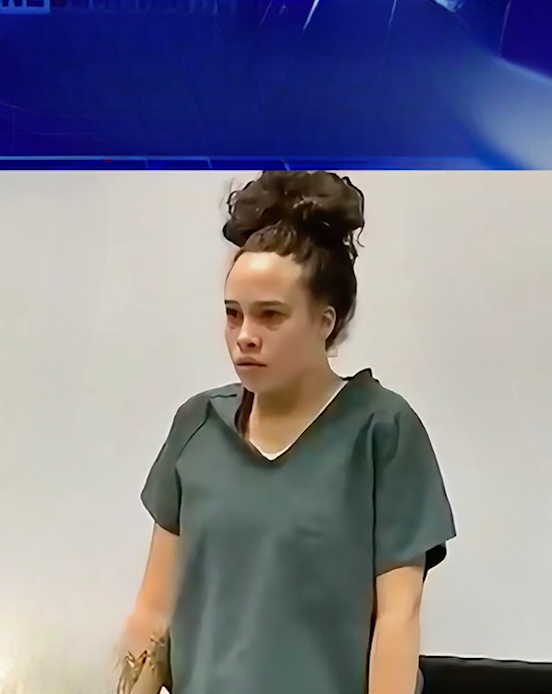In a deeply emotional and unsettling courtroom moment, a woman collapsed to the floor just seconds after being sentenced to death, triggering widespread reaction both in the courtroom and across the internet. The distressing incident, caught on video and shared rapidly across social media platforms, has sparked a global conversation surrounding the human impact of capital punishment and the mental toll of facing such a final, irreversible judgment.
A Sentencing That Ended in Collapse
The dramatic event unfolded during a routine sentencing hearing, where the unidentified woman appeared before a judge dressed in standard-issue prison clothing. Observers noted that she appeared visibly shaken throughout the proceedings—her body trembling, her face pale, and her voice barely audible. She was clearly struggling to maintain emotional control, standing in silence as the courtroom prepared for the final decision.

The atmosphere in the courtroom was already tense, but the moment became truly unforgettable when the judge delivered the official verdict: a sentence of death. Mere seconds after hearing those words, the woman reportedly lost consciousness and collapsed on the floor in full view of the court. The room fell silent before cries of alarm broke out, and multiple officers rushed toward her to provide assistance. Medical personnel were immediately called in to evaluate her condition.
Chaos and Shock Rip Through the Courtroom
The initial shock quickly turned into chaos. Witnesses later described the room as being “frozen in disbelief” before erupting into confusion and panic. Some onlookers gasped and covered their mouths, others turned away, unable to watch. Court officials did their best to restore order as paramedics arrived and tended to the woman, who remained motionless for several minutes.
At this time, her current medical condition has not been publicly disclosed, but the emotional aftermath continues to reverberate far beyond the courtroom walls. The disturbing nature of the event has caused many to question the psychological implications of capital sentencing and the emotional capacity of individuals forced to endure it in public, under the eyes of judges, jurors, and spectators.

Online Uproar as Video Spreads
Within hours of the incident, video footage began circulating online, quickly going viral across platforms like Twitter, TikTok, and YouTube. Reactions have been intense and varied—ranging from compassion and sorrow to outrage and criticism. Many viewers expressed sympathy for the woman, regardless of her crime, stating that no human being should have to experience such a profound and terrifying moment in such a public and clinical way.
Others questioned the structure and formality of the justice system, suggesting that verdicts carrying such heavy consequences should be delivered with greater consideration for the mental health of the defendant. Some have even called for reforms in how death penalty decisions are communicated, urging courts to incorporate psychological support or private delivery of such rulings.
A Deeper Conversation About Capital Punishment and Mental Health
This shocking courtroom collapse has not only reignited debate over the ethics and morality of the death penalty itself, but also exposed broader concerns about mental health in the criminal justice system. Critics argue that the system often fails to provide adequate psychological care for inmates, particularly those who are awaiting life-altering decisions. Others stress that more needs to be done to evaluate a defendant’s mental stability before, during, and after trial—especially when facing the possibility of capital punishment.
As the video continues to spark global attention, one thing is certain: this haunting moment has opened a window into the very real emotional consequences of the justice system’s harshest decisions. And for many, it has become a powerful symbol of the urgent need for reform, compassion, and humanity in the way society handles justice at its most severe.



